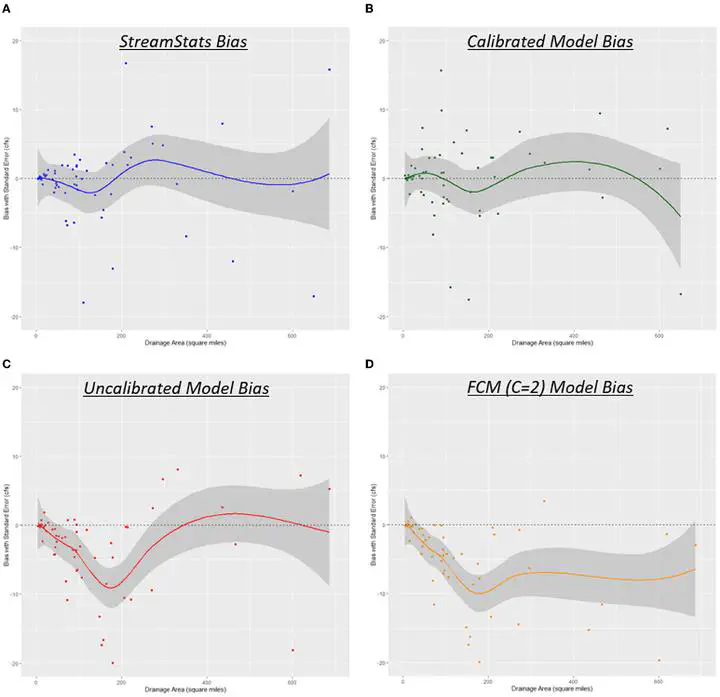Fuzzy C-Means clustering for physical model calibration and 7-day, 10-year low flow estimation in ungaged basins: comparisons to traditional, statistical estimates

Abstract
In the northeast U.S., resource managers commonly apply 7-day, 10-year (7Q10) low flow estimates for protecting aquatic species in streams. In this paper, the efficacy of process-based hydrologic models is evaluated for estimating 7Q10s compared to the United States Geological Survey’s (USGS) widely applied web-application StreamStats, which uses traditional statistical regression equations for estimating extreme flows. To generate the process-based estimates, the USGS’s National Hydrologic Modeling (NHM-PRMS) framework (which relies on traditional rainfall-runoff modeling) is applied with 36 years of forcings from the Daymet climate dataset to a representative sample of ninety-four unimpaired gages in the Northeast and Mid-Atlantic U.S. The rainfall-runoff models are calibrated to the measured streamflow at each gage using the recommended NHM-PRMS calibration procedure and evaluated using Kling-Gupta Efficiency (KGE) for daily streamflow estimation. To evaluate the 7Q10 estimates made by the rainfall-runoff models compared to StreamStats, a multitude of error metrics are applied, including median relative bias (cfs/cfs), Root Mean Square Error (RMSE) (cfs), Relative RMSE (RRMSE) (cfs/cfs), and Unit-Area RMSE (UA-RMSE) (cfs/mi2). The calibrated rainfall-runoff models display both improved daily streamflow estimation (median KGE improving from 0.30 to 0.52) and 7Q10 estimation (smaller median relative bias, RMSE, RRMSE, and UA-RMSE, especially for basins larger than 100 mi2). The success of calibration is extended to ungaged locations using the machine learning algorithm Fuzzy C-Means (FCM) clustering, finding that traditional K-Means clustering (FCM clustering with no fuzzification factor) is the preferred method for model regionalization based on (1) Silhouette Analysis, (2) daily streamflow KGE, and (3) 7Q10 error metrics. The optimal rainfall-runoff models created with clustering show improvement for daily streamflow estimation (a median KGE of 0.48, only slightly below that of the calibrated models at 0.52); however, these models display similar error metrics for 7Q10 estimation compared to the uncalibrated models, neither of which provide improved error compared to the statistical estimates. Results suggest that the rainfall-runoff models calibrated to measured streamflow data provide the best 7Q10 estimation in terms of all error metrics except median relative bias, but for all models applicable to ungaged locations, the statistical estimates from StreamStats display the lowest error metrics in every category.